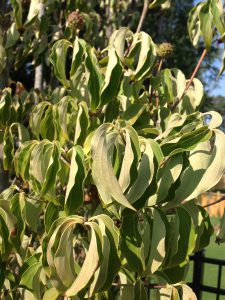The semi-tropical climate of central Florida typically produces a warm dry season between March and June. It is at this time of year we are most likely to experience a prolonged period of very low rainfall which stress trees and shrubs. Numerous residents call my office asking for advice on recognizing drought stress and how to take corrective action.
Here are some tips to help you recognize the signs of drought stress and how to address it through proper irrigation.
Tips
Drought stress will occur when water in the soil becomes limited and unavailable to trees and shrubs. As the soil dries out young roots can be killed outright, further reducing the ability of trees and shrubs to absorb adequate water. The inability to obtain sufficient water predisposes trees and shrubs to insect and disease problems.
Tell-tale signs of a tree suffering from drought stress include: 1. the loss of leaves starting in the top center of canopy, 2. yellowing and/or browning of leaves, 3. wilting of leaves and 4. dead branch tips at the top of the tree. These are all indicators of water not reaching up into the canopy and signs of dead dry fine roots
Fertilizer salts can cause root injury when soil moisture is limited. Do not fertilize your trees or shrubs during a drought, unless under the direction of a professional arborist or landscape architect.
Tips on Irrigation
Prioritize newly planted or transplanted trees and shrubs which lack full root systems, and trees with damaged root systems, these are the most at risk.
Remember that the idea is to keep the tree’s roots moist, but not wet. Saturating the soil can damage your tree’s root system. Let the top few inches of the soil dry out before considering irrigating further.
- Most tree roots in our region are within 2 to 4 feet of the surface. It is this are which you want to supply water. Light and frequent irrigation will not work for trees.
- Water slowly so water moves down into the soil, use one or two deep watering’s every 7 to 10 days during drought.
- If you have them use soaker hoses and drip irrigation. These are the most effective watering tools that discharge even streams of slow, trickling water directly to the root zone beneath trees and shrubs.
- When using a sprinkler system, place a container nearby to measure when you have provided 1 inch of water to the soil. One inch of irrigated water can wet down to 1 foot below the surface.
- Water strategically. Your trees and shrubs will absorb more water in the early morning, before the warming sun causes evaporation.
Tips for Newly Planted or Transplanted Trees
- Remove all mulch laying on top of the root ball of a newly planted tree. Research has demonstrated that mulch can prevent water penetration into the root ball;
- On smaller trees apply 5 gallons of water per inch of trunk diameter to the top of the root ball (caliper) and adjacent soil 2X per week;
- Apply water slowly so it soaks in and does not run off. If the root ball is very dry you should apply the irrigation very slowly and deliberately until you are sure the water is wetting the root ball;
- More frequent irrigation should be considered for newly planted trees. (see table below)
Tips for Large Mature – Established Trees
Large mature trees can decline in health during extended drought. Because of the size of the trees and their age we often don’t look for indicators of draught stress or simply miss the signs of leaf yellowing/ browning and wilting high up in the canopy.
- One (1) inch of water evenly distributed will allow the top foot of soil to moisten and provide optimum environment for water uptake and root growth.
- Do this every 2 to 3 weeks during an extended drought.
- Irrigate under the entire canopy. This may take several hours or more depending on what type of application devices are available to you. If you have limited time to devote to your trees, it is better to completely wet a small area than to only wet the surface.
- Limit pedestrian, mower, and vehicle traffic under the tree to prevent further damage to roots.
Finally be sure your program complies with local water restrictions.
To learn more about drought stress and irrigation visit the following:
 0
0
